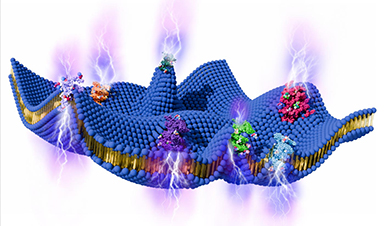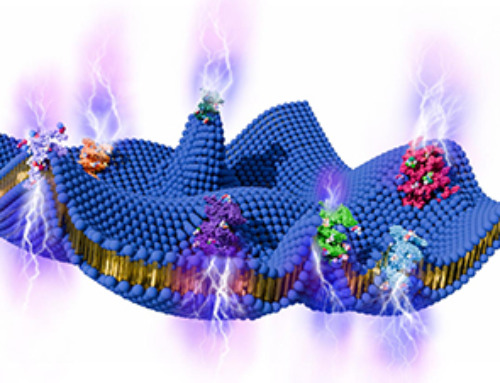Every time we ask an AI a question, it doesn't just return an answer—it also burns energy and emits carbon dioxide.
German researchers found that some "thinking" AI models, which generate long, step-by-step reasoning before answering, can emit up to 50 times more CO₂ than models that give short, direct responses. These emissions don't always lead to better answers, either.
AI Answers Come at a Hidden Environmental Cost
No matter what you ask an AI, it will always generate an answer. In order to do this, whether the response is accurate or not, the system relies on tokens. These tokens are made up of words or fragments of words that are transformed into numerical data so the AI model can process them.
That process, along with the broader computing involved, results in carbon dioxide (CO2) emissions. Yet most people are unaware that using AI tools comes with a significant carbon footprint. To better understand the impact, researchers in Germany analyzed and compared the emissions of several pre-trained large language models (LLMs) using a consistent set of questions.
"The environmental impact of questioning trained LLMs is strongly determined by their reasoning approach, with explicit reasoning processes significantly driving up energy consumption and carbon emissions," said first author Maximilian Dauner, a researcher at Hochschule München University of Applied Sciences and first author of the Frontiers in Communication study. "We found that reasoning-enabled models produced up to 50 times more CO₂ emissions than concise response models."
Reasoning Models Burn More Carbon, Not Always for Better Answers
The team tested 14 different LLMs, each ranging from seven to 72 billion parameters, using 1,000 standardized questions from a variety of subjects. Parameters determine how a model learns and makes decisions.
On average, models built for reasoning produced 543.5 additional "thinking" tokens per question, compared to just 37.7 tokens from models that give brief answers. These thinking tokens are the extra internal content generated by the model before it settles on a final answer. More tokens always mean higher CO₂ emissions, but that doesn't always translate into better results. Extra detail may not improve the accuracy of the answer, even though it increases the environmental cost.
Accuracy vs. Sustainability: A New AI Trade-Off
The most accurate model was the reasoning-enabled Cogito model with 70 billion parameters, reaching 84.9% accuracy. The model produced three times more CO2 emissions than similar sized models that generated concise answers. "Currently, we see a clear accuracy-sustainability trade-off inherent in LLM technologies," said Dauner. "None of the models that kept emissions below 500 grams of CO₂ equivalent achieved higher than 80% accuracy on answering the 1,000 questions correctly." CO2 equivalent is the unit used to measure the climate impact of various greenhouse gases.
Subject matter also resulted in significantly different levels of CO2 emissions. Questions that required lengthy reasoning processes, for example abstract algebra or philosophy, led to up to six times higher emissions than more straightforward subjects, like high school history.
How to Prompt Smarter (and Greener)
The researchers said they hope their work will cause people to make more informed decisions about their own AI use. "Users can significantly reduce emissions by prompting AI to generate concise answers or limiting the use of high-capacity models to tasks that genuinely require that power," Dauner pointed out.
Choice of model, for instance, can make a significant difference in CO2 emissions. For example, having DeepSeek R1 (70 billion parameters) answer 600,000 questions would create CO2 emissions equal to a round-trip flight from London to New York. Meanwhile, Qwen 2.5 (72 billion parameters) can answer more than three times as many questions (about 1.9 million) with similar accuracy rates while generating the same emissions.
The researchers said that their results may be impacted by the choice of hardware used in the study, an emission factor that may vary regionally depending on local energy grid mixes, and the examined models. These factors may limit the generalizability of the results.
"If users know the exact CO₂ cost of their AI-generated outputs, such as casually turning themselves into an action figure, they might be more selective and thoughtful about when and how they use these technologies," Dauner concluded.
Reference: "Energy costs of communicating with AI" by Maximilian Dauner and Gudrun Socher, 30 April 2025, Frontiers in Communication.
DOI: 10.3389/fcomm.2025.1572947
News
The Brain’s Strange Way of Computing Could Explain Consciousness
Consciousness may emerge not from code, but from the way living brains physically compute. Discussions about consciousness often stall between two deeply rooted viewpoints. One is computational functionalism, which holds that cognition can be [...]
First breathing ‘lung-on-chip’ developed using genetically identical cells
Researchers at the Francis Crick Institute and AlveoliX have developed the first human lung-on-chip model using stem cells taken from only one person. These chips simulate breathing motions and lung disease in an individual, [...]
Cell Membranes May Act Like Tiny Power Generators
Living cells may generate electricity through the natural motion of their membranes. These fast electrical signals could play a role in how cells communicate and sense their surroundings. Scientists have proposed a new theoretical [...]
This Viral RNA Structure Could Lead to a Universal Antiviral Drug
Researchers identify a shared RNA-protein interaction that could lead to broad-spectrum antiviral treatments for enteroviruses. A new study from the University of Maryland, Baltimore County (UMBC), published in Nature Communications, explains how enteroviruses begin reproducing [...]
New study suggests a way to rejuvenate the immune system
Stimulating the liver to produce some of the signals of the thymus can reverse age-related declines in T-cell populations and enhance response to vaccination. As people age, their immune system function declines. T cell [...]
Nerve Damage Can Disrupt Immunity Across the Entire Body
A single nerve injury can quietly reshape the immune system across the entire body. Preclinical research from McGill University suggests that nerve injuries may lead to long-lasting changes in the immune system, and these [...]
Fake Science Is Growing Faster Than Legitimate Research, New Study Warns
New research reveals organized networks linking paper mills, intermediaries, and compromised academic journals Organized scientific fraud is becoming increasingly common, ranging from fabricated research to the buying and selling of authorship and citations, according [...]
Scientists Unlock a New Way to Hear the Brain’s Hidden Language
Scientists can finally hear the brain’s quietest messages—unlocking the hidden code behind how neurons think, decide, and remember. Scientists have created a new protein that can capture the incoming chemical signals received by brain [...]
Does being infected or vaccinated first influence COVID-19 immunity?
A new study analyzing the immune response to COVID-19 in a Catalan cohort of health workers sheds light on an important question: does it matter whether a person was first infected or first vaccinated? [...]
We May Never Know if AI Is Conscious, Says Cambridge Philosopher
As claims about conscious AI grow louder, a Cambridge philosopher argues that we lack the evidence to know whether machines can truly be conscious, let alone morally significant. A philosopher at the University of [...]
AI Helped Scientists Stop a Virus With One Tiny Change
Using AI, researchers identified one tiny molecular interaction that viruses need to infect cells. Disrupting it stopped the virus before infection could begin. Washington State University scientists have uncovered a method to interfere with a key [...]
Deadly Hospital Fungus May Finally Have a Weakness
A deadly, drug-resistant hospital fungus may finally have a weakness—and scientists think they’ve found it. Researchers have identified a genetic process that could open the door to new treatments for a dangerous fungal infection [...]
Fever-Proof Bird Flu Variant Could Fuel the Next Pandemic
Bird flu viruses present a significant risk to humans because they can continue replicating at temperatures higher than a typical fever. Fever is one of the body’s main tools for slowing or stopping viral [...]
What could the future of nanoscience look like?
Society has a lot to thank for nanoscience. From improved health monitoring to reducing the size of electronics, scientists’ ability to delve deeper and better understand chemistry at the nanoscale has opened up numerous [...]
Scientists Melt Cancer’s Hidden “Power Hubs” and Stop Tumor Growth
Researchers discovered that in a rare kidney cancer, RNA builds droplet-like hubs that act as growth control centers inside tumor cells. By engineering a molecular switch to dissolve these hubs, they were able to halt cancer [...]
Platelet-inspired nanoparticles could improve treatment of inflammatory diseases
Scientists have developed platelet-inspired nanoparticles that deliver anti-inflammatory drugs directly to brain-computer interface implants, doubling their effectiveness. Scientists have found a way to improve the performance of brain-computer interface (BCI) electrodes by delivering anti-inflammatory drugs directly [...]





















